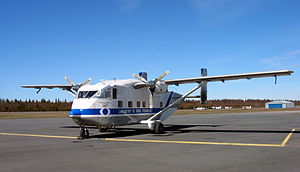contactground.9
Banned
Loved steep turns, but mine were usually better turning to the low side. Don't know why..
Hitting your own wake turbulence in a steep turn is a very rewarding feeling!
Whenever I run across a student that has a fear of a particular maneuver, I try to get to cause of the fear by discussing it on the ground first. What is it about steep turns that bothers you? Once you understand what causes the fear, then you and your instructor can determine how to deal with it best. Sometimes a better understanding of aerodynamics will help, sometimes its just going out and facing your fear. Whatever it is, once you and your instructor understand your fear, you can then begin to conquer it.
Something that really helped me while as a private student, was doing a falling leaf stall series. Everyone at first doesn't understand what a stall is. By sitting in a falling leaf for a while, you can see that the plane is still under control in the stall.
You will never fly banners for a living.(I don't think I will ever LIKE them though.) I'm so glad my instructor is willing to put up with me.Is anyone else freaked out by steep turns?
Go out and have a CFI spin you. Once spun a couple times you learn that this is the very worst thing that can happen to you from a stall and that it isn't to bad. It is very difficult to get into and very easy to recover from in a skyhawk that is. It may sound drastic and I am sure I will get flamed on this but the day I intro stalls is the day I intro a spin. I will not let any student solo without seeing a spin at least once.
As for steep turns it tends to be that when on the low side it is a little scary. Do steep turn only to the high side, to the right, until you feel completely comfortable with them. By that time you should have no problem from to the left.
Loved steep turns, but mine were usually better turning to the low side. Don't know why..
beasly said:Another great topic during the falling leaf is a "real time" discussion of the Center Of Pressure. You can "feel" the concept as it bobs forward and aft.
[Center of Pressure]...I have been playing with this idea since reading your post a few days ago and can't quite figure out how you would use this to really explain that. Would you mind shinning some light on it for me?
but can you really use this demo to explain CP movement?
In the unstalled regime, AoA up means CP forward. At the stall, it moves back again. Interestingly, at low AoAs, the CP might not even be on the wing, but rather behind it. How much intuitive sense does that make?AOA up = CP back and vice versa with AOA down correct?
Whenever I run across a student that has a fear of a particular maneuver, I try to get to cause of the fear by discussing it on the ground first. What is it about steep turns that bothers you? Once you understand what causes the fear, then you and your instructor can determine how to deal with it best. Sometimes a better understanding of aerodynamics will help, sometimes its just going out and facing your fear. Whatever it is, once you and your instructor understand your fear, you can then begin to conquer it.
How much intuitive sense does that make?

Excellent advice, but what about people that that just doesn't work on? This can work in the way an irrational fear does (aka: you know there are no monsters in the dark but you are scared anyway).
I have been playing with this idea since reading your post a few days ago and can't quite figure out how you would use this to really explain that. Would you mind shinning some light on it for me? Thanks.
As long as the behavior is consistent with the theory, you can use it to demonstrate the theory, regardless of whether that's really what's going on. The bobbing up and down is consistent with an airfoil stalling and unstalling, evening ignoring the effect on the horizontal stabilizer. How does the Seminole behave? The T-tail should minimize the turbulent flow on the horizontal stabilizer.
In the unstalled regime, AoA up means CP forward. At the stall, it moves back again. Interestingly, at low AoAs, the CP might not even be on the wing, but rather behind it. How much intuitive sense does that make?
